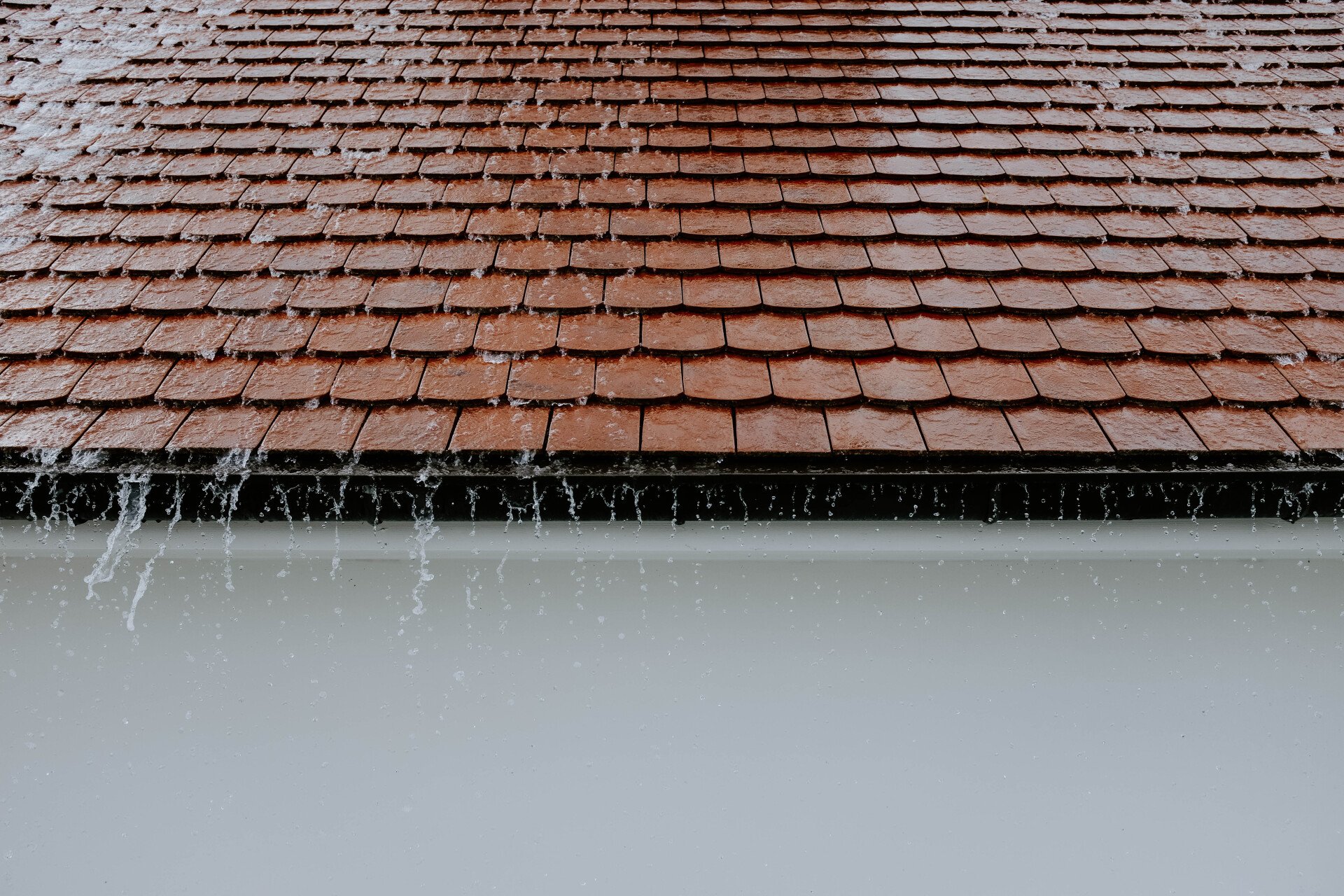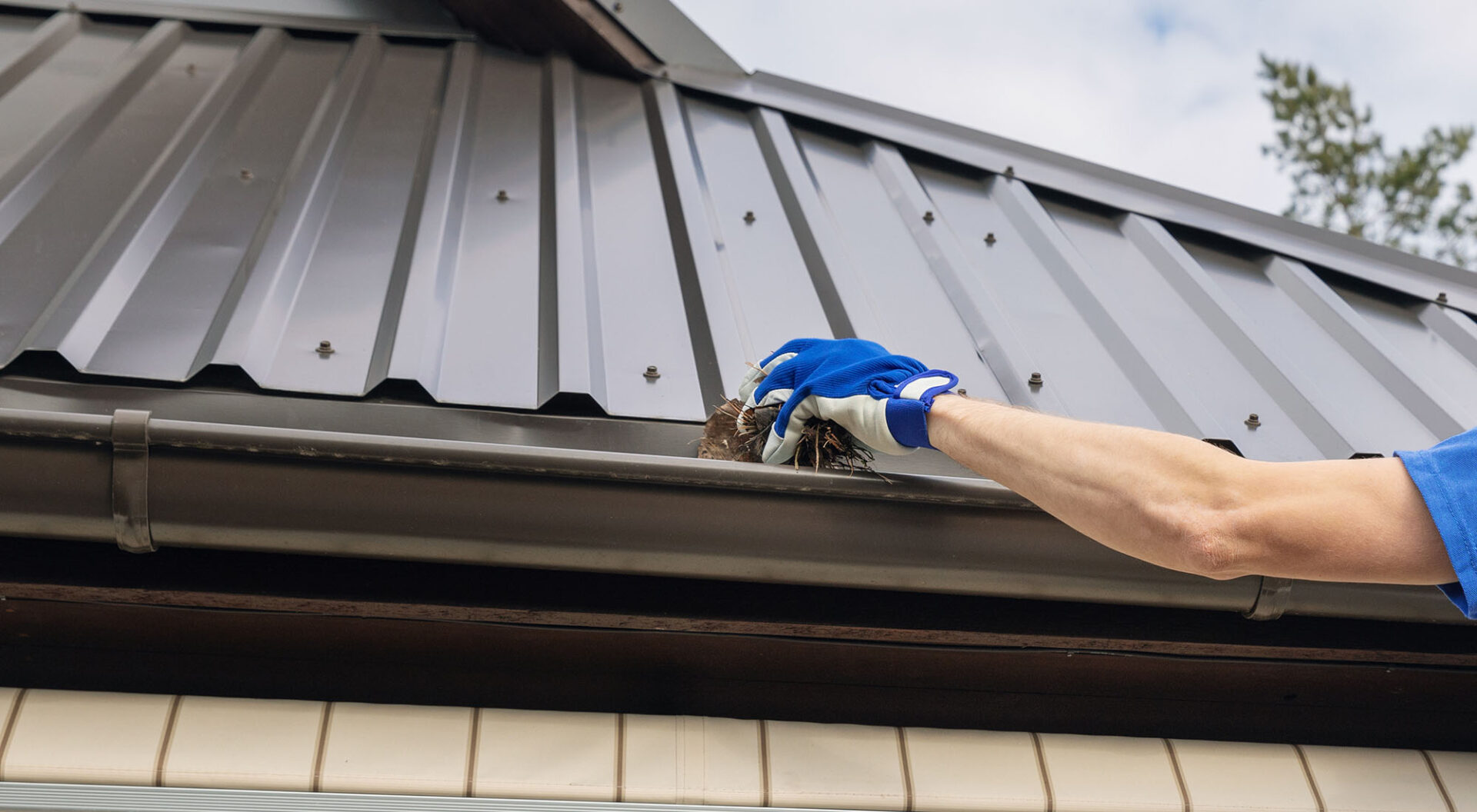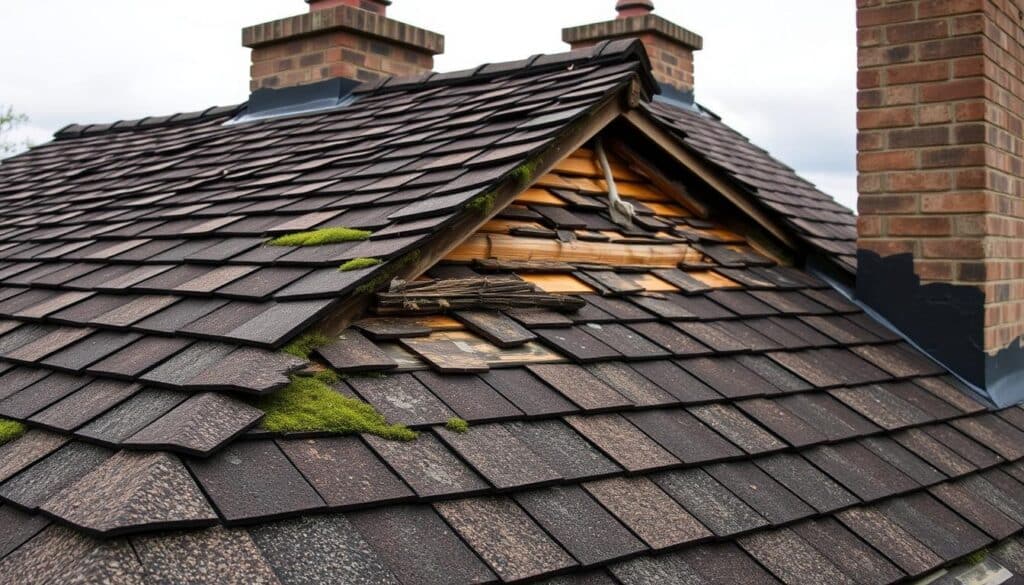Tile roofs need occasional cleaning to stay free of moss, algae, and staining, but the cleaning process itself can cause damage if done improperly. Cracked tiles, eroded surfaces, and even hidden leaks often come down to one thing: avoidable mistakes during cleaning. So, does roof cleaning damage tiles? It can—but only when the wrong tools, chemicals, or techniques are involved if roof cleaning is done by experts it can not damage tiles.. Understanding how that damage happens is the first step to avoiding it.
In this guide, we’ll break down the most common cleaning mistakes that harm tile roofs and show you which methods are actually safe to prevent damage due to cleaning.
How Roof Cleaning Causes Damage (If Done Wrong)
While roof cleaning can damage tiles, it is not because the act of cleaning is inherently harmful. The real issue lies in how the cleaning is carried out. A tile roof is a durable structure, but it’s also layered, porous, and sometimes brittle depending on age or material. When someone uses the wrong equipment, chemicals, or techniques, damage isn’t just possible—it’s likely.
Let’s break down the most common mistakes homeowners and contractors make during roof cleaning—the ones that lead directly to tile damage, avoidable repairs, and even long-term structural issues.
Mistake #1: Using High-Pressure Washing on Tile Roofs
This is arguably the most damaging—and unfortunately, the most common—mistake made during tile roof cleaning. High-pressure washers are designed to cut through grime quickly, but the force they generate can strip away the protective surface of clay or concrete tiles.
That protective layer exists to repel moisture and UV damage. Once it’s gone, the tile becomes porous, making it more vulnerable to cracking, staining, and long-term deterioration. Pressure can also drive water under the tiles, soaking the underlayment and leading to mold or rot beneath the surface.
It’s not just about the PSI either—pressure washing at the wrong angle can lift or shatter tiles on the spot. Even brief exposure to excessive force can cause irreversible damage, especially on aging or weathered roofs.
Mistake #2: Walking Directly on the Tiles Without Proper Support
A lot of damage doesn’t come from tools—it comes from people walking where they shouldn’t. Most roofing tiles are strongest at the overlapping edges and weakest in the center. Stepping in the wrong place can cause micro-cracks or breakage that you won’t notice until the next rainstorm—or the next big energy bill from poor insulation.
Without proper safety equipment like foam pads, walk boards, or ridge ladders, even a light step in the wrong area can compromise the structural integrity of a tile. This is especially true on older roofs where tiles have become brittle or have shifted slightly from years of expansion and contraction.
Professionals are trained to distribute their weight properly and minimize foot traffic entirely. Unfortunately, many DIYers or general cleaning crews aren’t and can damage the tiles during cleaning.
Mistake #3: Using Harsh or Inappropriate Chemicals
It’s tempting to reach for the strongest cleaner when you see moss, algae, or dark streaks on your roof, but stronger doesn’t mean safer. Many over-the-counter or homemade roof cleaners rely heavily on bleach, ammonia, or acidic solutions that break down organic growth fast, but also break down your roof in the process.
These chemicals can discolor tiles, strip surface coatings, and even accelerate wear by making the material more porous. Clay tiles are particularly sensitive, and even concrete tiles can lose their finish when exposed to strong chemical treatments. Slate roofs can absorb corrosive agents, leading to gradual weakening.
Even worse, runoff from these solutions can harm your landscaping or violate local environmental codes. Without careful dilution, application, and containment, chemical cleaning can turn a small aesthetic issue into a bigger structural and environmental problem.
Also Read: How to Extend the Life of Your Roof: Maintenance Tips for Homeowners
Mistake #4: Using the Wrong Tools or Rushing the Job
Tiles are prone to damage, and not all cleaning tools are appropriate for cleaning them. Tile roofs require gentle handling and material-specific tools, like soft brushes, low-pressure sprayers, and controlled rinsing systems. But it’s not uncommon for untrained workers to use abrasive scrubbers, rotary surface cleaners, or even metal tools that chip or scratch tiles.
Dragging hoses across ridgelines, spraying seams at an upward angle, or even pulling heavy equipment onto the roof can cause immediate or hidden damage. And when the focus is on speed, not care, shortcuts like these become more frequent.
Tile cleaning should never be rushed. Every roof is different, and taking time to understand its condition, slope, and material type is part of doing the job right. When those steps are skipped, the roof pays the price.
Mistake #5: Skipping a Pre-Cleaning Inspection
One of the most preventable causes of cleaning-related tile damage is failing to inspect the roof before starting. Any professional job should begin with a full walkaround (or drone scan) to check for:
- Cracked or loose tiles
- Damaged flashing or mortar joints
- Blocked gutters or valleys
- Signs of water pooling or mold beneath tiles
Cleaning a roof that already has weak spots, loose tiles, or underlying moisture issues can make those problems worse. For instance, washing over a cracked tile can allow water into the underlayment, and cleaning over detached flashing can loosen it completely.
An inspection helps determine how to clean—and whether small repairs should come first. Unfortunately, many homeowners skip this step when doing it themselves, and roofing contractors does not take the time to do it either.
What Are the Safe Roof Cleaning Methods for Tile Roofs?
If tile damage usually happens because of mistakes during cleaning, then the solution lies in doing it the right way. A proper cleaning method doesn’t just wash away stains and moss; it does so without compromising the material, coating, or weatherproofing of the roof.
In this section, we’ll walk through the safest approaches to cleaning a tile roof—methods that preserve its lifespan while still delivering real, lasting results.
Soft Washing: The Gold Standard for Tile Roofs
Soft washing is one of the safest and most effective cleaning techniques for tile roofs. Unlike pressure washing, which relies on high water force, soft washing uses a low-pressure stream paired with specially formulated cleaning solutions. This approach gently removes dirt, moss, algae, and lichen without damaging the tile surface or dislodging pieces of the roofing system.
What makes soft washing particularly ideal for tile is that it doesn’t rely on physical force to clean. Instead, the cleaning solution does the heavy lifting by breaking down organic growth at its root. The low-pressure rinse that follows is just strong enough to wash the debris away, all without compromising the protective surface of the tile. This method is especially beneficial for older roofs, where even light pressure could result in cracking if not handled correctly.
While the visual results of soft washing cleaning may take a day or two to fully show as the solution works and growth dies off, the long-term protection it offers makes it a safer and more strategic choice than pressure-based methods.
Choosing the Right Cleaning Chemicals and Solutions
The effectiveness of roof cleaning depends heavily on the type of solution used. A cleaning method might be gentle in terms of pressure, but if the chemicals are too harsh, they can still damage the tiles. The right cleaning solution should be formulated specifically for use on roofing materials like clay, concrete, or slate, and should be strong enough to break down moss and algae without stripping protective coatings.
Professional-grade cleaning agents often contain biodegradable surfactants that allow the solution to cling to tiles for a longer dwell time. These products typically continue working even after the rinse, providing longer-lasting resistance to future growth. When applied correctly, they won’t cause staining, erosion, or pitting on the tile surface.
On the other hand, cleaning with bleach-heavy or highly acidic solutions can speed up wear and lead to discoloration. While diluted bleach is sometimes used under professional supervision, it should always be followed with a thorough rinse and, in some cases, a neutralizing agent. Homeowners and untrained workers often overapply these substances, unknowingly accelerating the deterioration of their roofs.
Manual Spot Cleaning for Problem Areas
Not every roof needs a full wash every time. In some cases, it makes more sense to address specific areas where debris, moss, or algae tend to accumulate. Manual cleaning can be especially effective along shaded corners, beneath overhanging trees, or in valleys where runoff settles.
Soft-bristle brushes and hand tools are typically used to gently remove buildup without scratching or shifting the tiles. This method is often paired with targeted chemical application to ensure that the root systems of moss or algae are fully addressed. Because it avoids saturating the roof with water or chemicals, it offers a more controlled way to maintain problem spots without exposing the entire roof to unnecessary wear.
Manual spot cleaning is best suited for minor touch-ups between larger cleanings or for fragile roofs that can’t withstand broad treatment. When done properly, it adds years to your roof’s life by preventing small problems from spreading.
Using Equipment Designed for Tile Roofs
The safest cleaning results come not just from method and solution, but from the tools used. Professionals use equipment designed specifically for roofing materials and the contours of tile surfaces. This often includes low-pressure applicators, extendable wands with soft tips, and pumps that distribute cleaning agents evenly and gently.
Equally important is the way crews move across the roof. Rather than stepping directly on tiles, trained professionals use walk boards, padded supports, or roofing ladders to avoid placing pressure on vulnerable points. Even something as simple as dragging a hose across a ridge can cause cracking or misalignment if precautions aren’t taken.
By using tools and access systems meant for tile surfaces, experienced roof cleaners eliminate many of the risks that come with general-purpose cleaning approaches. They also minimize disturbance to the structure, ensuring your roof remains not just clean, but intact.
Read More: How to Fix Roof Creaking Sounds and What They Might Mean
Timing the Cleaning for Long-Term Impact
Even safe cleaning methods can lead to trouble if they’re done too frequently. Every roof has a natural tolerance based on its material, exposure to weather, and current condition. In regions with high humidity or frequent rainfall, algae and moss tend to grow faster, so roofs may need cleaning every two to three years. In drier climates, it might be enough to clean once every four or five years.
Older roofs with brittle tiles need even more caution. A full roof wash might not be appropriate at all, and smaller, targeted cleaning may be safer. In those cases, inspections become crucial to determine whether cleaning is necessary or if it can be postponed.
The key is to clean when it’s needed—no more, no less. Sticking to a schedule that aligns with your climate and the age of your roof ensures that you’re not placing unnecessary stress on the structure just to keep it looking good.
Hiring Professionals With Tile Roof Experience
Of course, the best method is only as good as the person applying it. That’s why hiring someone with experience specifically in tile roofs matters. Not all contractors are trained to deal with the unique challenges tiles present, and a generalist cleaner may inadvertently cause more harm than good.
A reliable roof cleaning professional will always begin with a pre-cleaning inspection, clearly explain the method they’ll use, and apply only those chemicals and tools that are safe for tile surfaces. They’ll also be equipped to handle walk safety, runoff management, and post-cleaning inspection—all of which are part of a complete, damage-free job.
While it might be tempting to go with the cheapest option, working with a company that specializes in tile roofs pays off in both performance and protection. It’s an investment in the long-term health of your home, not just a cosmetic upgrade.
Looking for a Safer Way to Clean Your Tile Roof?
If you’re worried that roof cleaning might damage your tiles, you’re not alone—and you’re right to be cautious. At Delta Roofing Long Island, we use soft washing methods tailored specifically for tile roofs, avoiding the harsh pressure and chemicals that lead to cracking or erosion. Every job starts with a thorough inspection, ensuring that we treat your roof based on its actual condition, not just its appearance. Contact us today to schedule a safe, professional cleaning that your roof can truly rely on.





